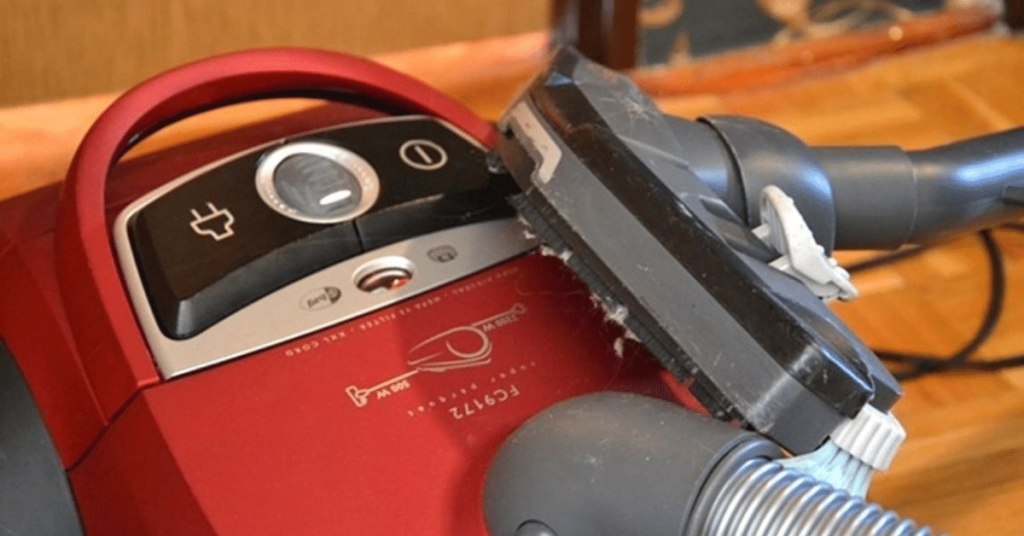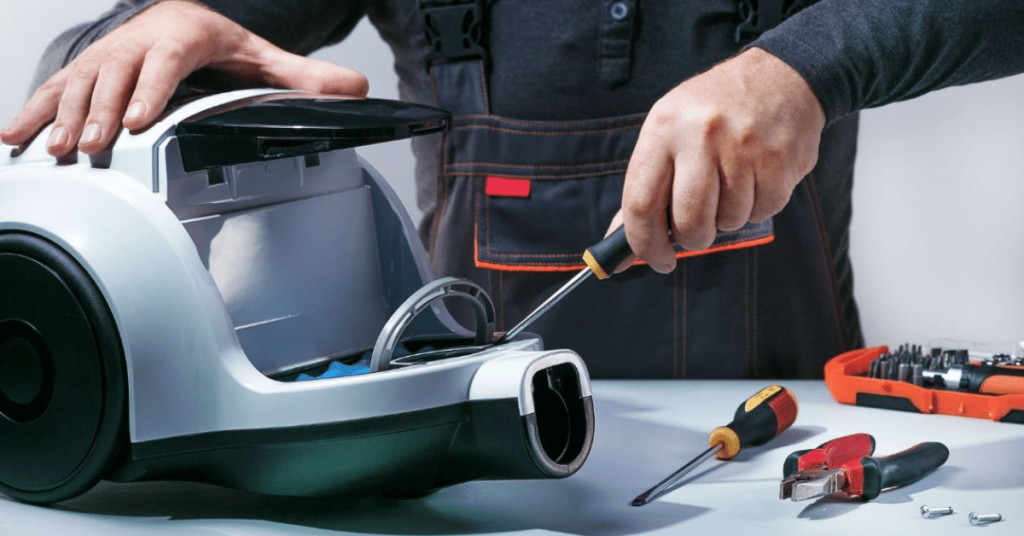You probably already know how important it is to keep and maintain a vacuum cleaner clean and in good conditions. Keeping a regular cleaning schedule for your vacuum will save you lots of time and trouble.
But, what’s the one thing we all tend to forget to clean or don’t pay so much attention? Yes, you’re right! The vacuum filters.
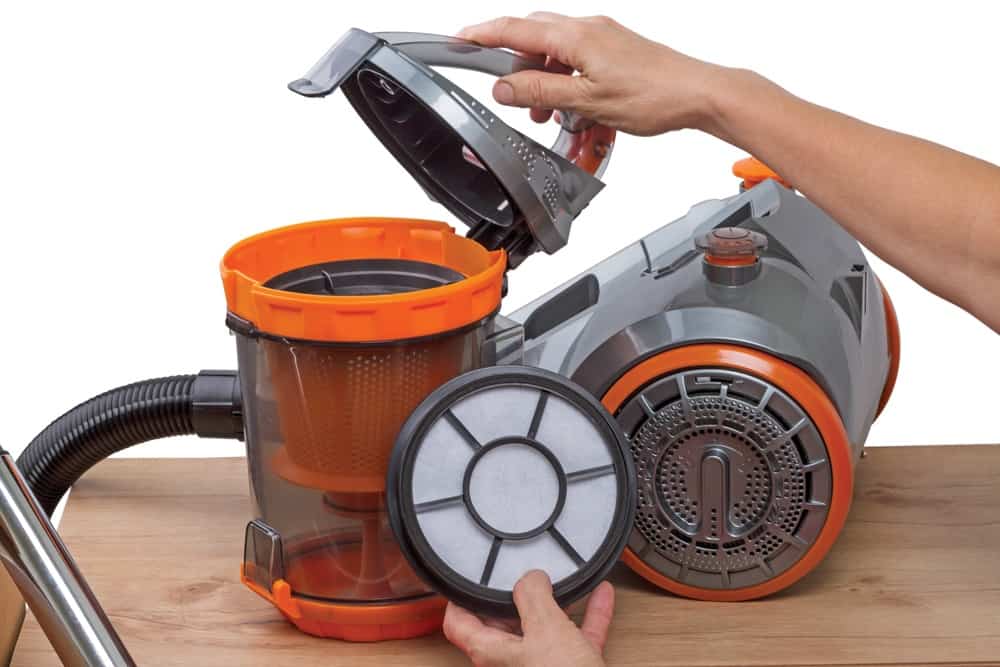
We often forget to pay attention to one of the most crucial parts for a vacuum cleaner to work on its full potential. Dirty filters will make your vacuum less effective by reducing it’s suction power and making it harder to eliminate even more dirt and allergens from your floors. Not to mention other problems it may cause such as blockages and overheating the motor.
In this article will cover all the types of vacuum filters that exist and how to clean them with 4 easy steps. But if you’re determined to have a perfectly cleaned vacuum cleaner and start having a regular cleaning schedule, then the following post is waiting for you!
How to Clean a Vacuum Cleaner. General Maintenance & Deep Clean
Your vacuum cleaner isn’t cleaning the way it should? It’s probably because you haven’t cleaned it right (or at all!). This Ultimate Guide has everything you need.
Types of vacuum filters
First of all, so that everything’s clear, you must know that all vacuum cleaners must have filters. A vacuum without filters would be a total failure.
Why? Because filters are used to trap the dust and allergens that are in the air before it goes out again, and a vacuum without a filter would just be circulating the air, but not cleaning it.
That being said, there are many different types of filtering systems. Each type of vacuum model will use one or multiple types, depending on the number of filters they have.
But, are all vacuum filters washable? No. Some can be washed and reused but others must be replaced once they’re filled with dirt.
Now, let’s see which types of vacuum filters exist nowadays:
Foam Filters
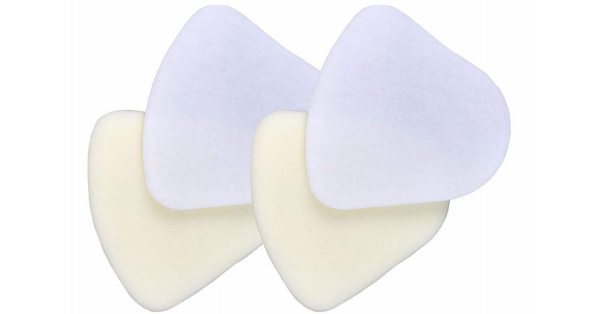
They are usually used as a secondary filter as they can only filter the air that has been previously clean from all the dirt, dust and debris. Their function is to clean the air just before it gets out in the room again.
Almost all foam filters can be washed and re-used. But you should always check with the manufacturer’s instructions to avoid damaging your vacuum cleaner.
Disk Filters
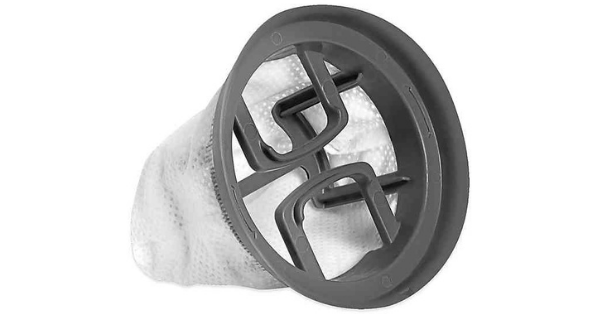
They are used as primary filters most of the times and look very similar to coffee filters. Mostly made from paper or cloth, they can sustain very little amount of dirt before having to be washed or replaced (depending on the manufacturer). They also tend to be more expensive due to their structure.
Cloth Filters
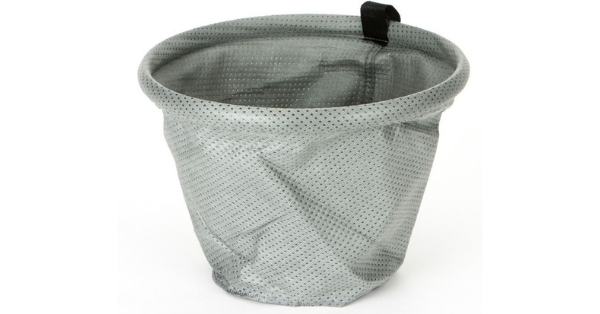
Used in large industrial vacuum cleaners mostly. They are tough enough to trap large particles, washable and more durable than all the other types.
Cartridge Filters
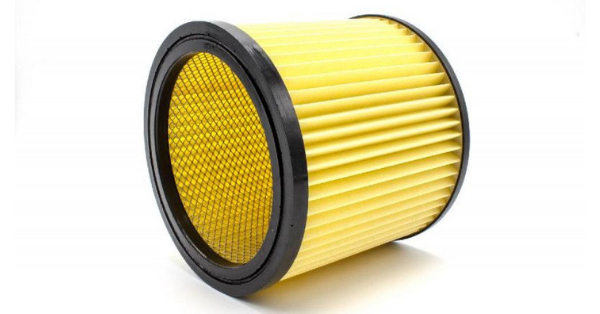
They are widely known for being disposable (you’ll have to change them once in a while), so don’t try to reuse them. But you can extend its useful life by tapping the dust off. They can be used as primary or secondary filters, and you can find them made from synthetic materials, paper or even foam.
Aside from these 4 main types of filters, you can find other classifications on the market. These classifications are just features you can find in all the 4 types mentioned above.
These features are:
– HEPA filters
– UPA filters
– Allergen filters
– Washable filters
– Scented filters
– MicroFresh filters
– Wet/Dry filters
– Pet filters
How often should you clean vacuum filters?
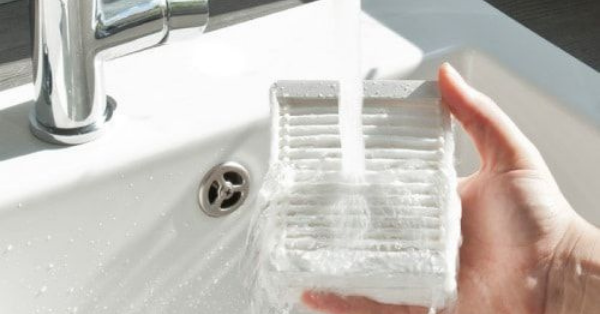
As you can see, there are multiple types of vacuum filters. And even though what I’m saying here is overall advice and can be applied to all, check first before doing anything with the manufacturer’s hand book or manual.
Cleaning your vacuum filters should be kind of a regular thing. So, in general, the more the better.
However, as said before, how often will depend on your vacuum cleaner and filter, and last but not least, how often do you use it.
– If you vacuum daily, then you should clean it on a weekly basis.
– If you vacuum more on a weekly basis, then once a month would be fine.
– For occasional uses, then checking it every 3 or 4 months will be enough.
There are also some central vacuum systems nowadays that have self-cleaning filters. That would take all our problems away, right?
How often should you replace vacuum filters?
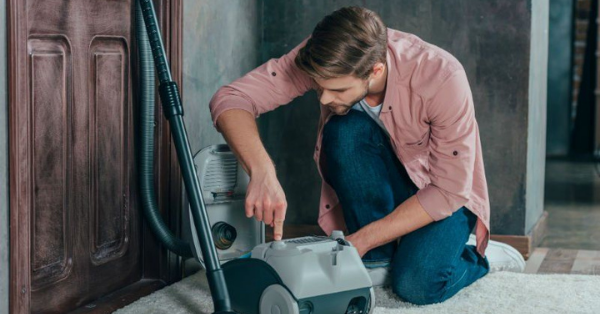
Now, here there’s no general rule of thumb… the best thing to do is check the manufacturer’s handbook. There you should find all the information you need about what type of filters do you need and how often should you replace them.
But, just in case you need some tips, here you have some:
– HEPA filters: HEPA stands for high-efficiency particulate air filters, which can trap particles as small as 0.3 microns. The problem about this type of filters is that they are many filters labeled as HEPA when they’re not True HEPA. True HEPA filters have a serial number with the test result and the replacement or expiration date.
– Re-usable filters: as the name says it, they can be washed and re-used, so you just have to replace them when they start to show signs of wear and tear.
– Allergen filters: can also be called micron filters. And even though they’re not HEPA filters, they tend to be enough if you just want to reduce allergic reactions. They should be replaced once a month.
The replacement of vacuum filters is also directly affected by how often do we use them.
Signs of a dirty vacuum filter
Dirty vacuum filters make vacuum cleaners less efficient. So, it should be very easy to detect when your filter probably needs a wash or a replacement.
These are the signs that may appear if your vacuum filter is dirty:
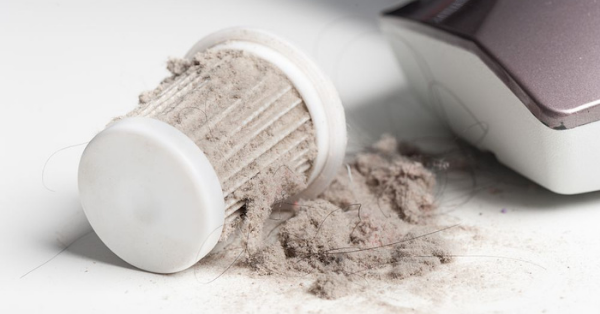
– Decrease or loss of suction power
– You can see that it’s leaving dirt behind
– It sounds different. As if the motor was malfunctioning or overheating
– Your vacuum cleaner is starting to smell
If you see any of those signs, then you might want to check your vacuum filters. And clean them is necessary. You’ll see how easy it is to get your vacuum back working to its full potential.
How to clean vacuum filters: steps
Once you that know if your vacuum filter is washable or not, how often should you clean it and how to detect if it’s too dirty, let’s get to the juicy part!
That’s why you were here in the first place, right?
Step 1. Check the vacuum cleaner’s manual
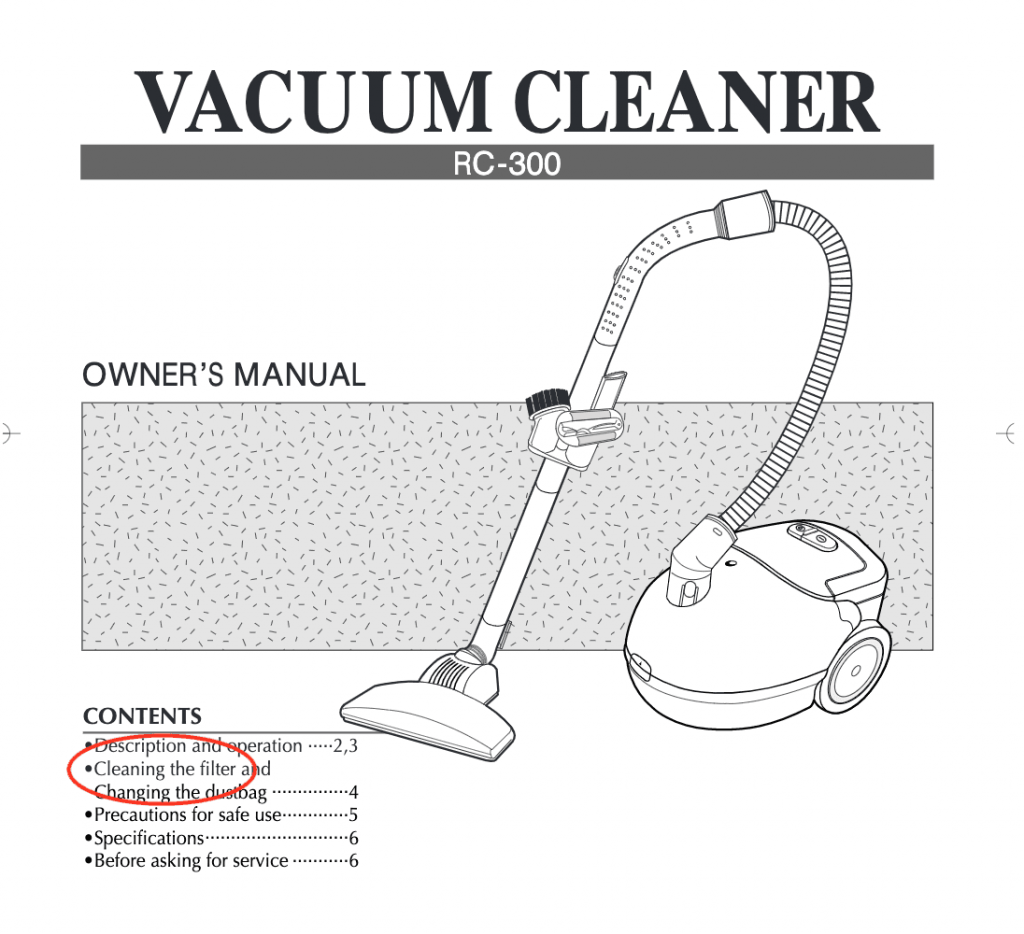
There you should be able to find all the information about your vacuum’s filter. How to disassemble it from the vacuum cleaner, whether it’s washable or not and how often should you clean it or replace it.
If you really want to avoid having problems in the future, follow the instructions very carefully!
Step 2. Dust it off
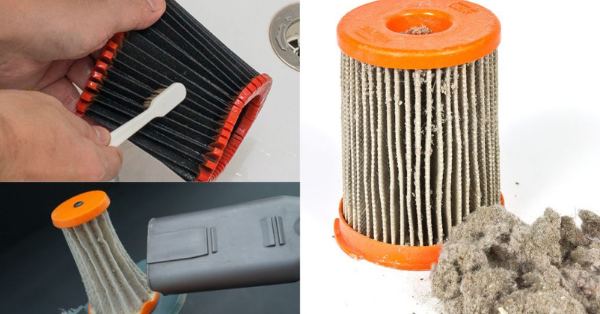
The first thing you need to do is locate where the vacuum filters are (if it has more than one), remove it from the vacuum cleaner and tap it against a hard surface to remove all the dust you can. It’s probably a good idea to do it outside, just so you don’t make a mess and spread the dirt all over your house again.
You can also try and remove the excess of dirt with a soft brush or a compressed air machine. Just be careful not to damage it!
CAUTION!
If your filter isn’t washable this, this is the only cleaning step you can do to extend its useful life before having to replace it.
Step 3. Start rinsing with water
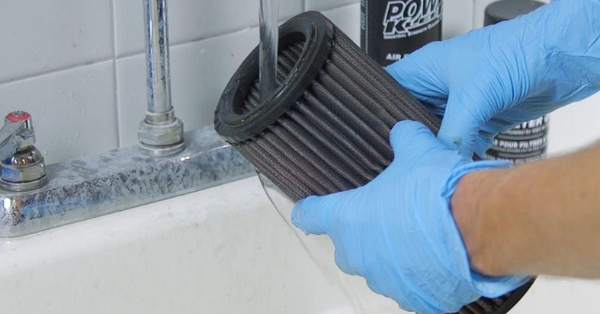
Apply this step on washable filters only. Foam, plastic or synthetic materials will probably be washable but check first!
Place the filter under cold running water and gently rinse off all the dirt and dust (do not use detergent or soap!). Once it’s all clean, tap it to remove the excess of water and let it dry for at least 24 hours before putting it back on its place. This way you’ll avoid mold problems in the future.
Step 4. Replace the filter
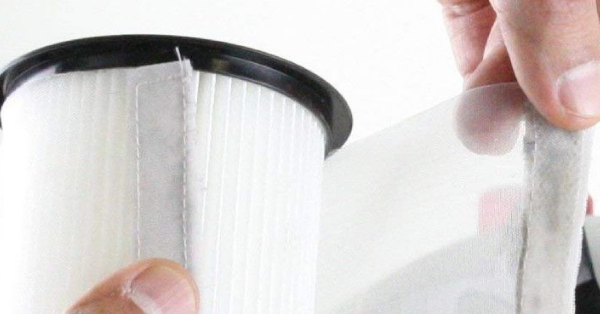
If your vacuum filter is not washable, your only option (as I said before) is to try and dust it off a bit to expand it’s useful life a bit, but you’ll have to replace sooner than later.
Washable filters also have a specific life span or expiration date. Don’t think they’re forever. So, be careful and lookout for signs of wear and tear when cleaning it, and replace it when you see it’s time to do so.
BONUS! 3 tips before you go
Here are some other tips and recommendations for you:
– Use gloves during the whole cleaning process. Especially if you haven’t cleaned the filter in a while!
– After dusting off the filters, don’t forget to clean thoroughly the brush used if you used one. You don’t want those germs back into the house!
– When letting it dry, it’s better to place it horizontally.
Conclusion
And that’s all my friend! All you ever need to know about how to clean your vacuum filters the right way.
Don’t forget how important it is to have a clean filter for your vacuum cleaner to function correctly. It will save you lots of problems and money.
Trust me!
Why is Your Vacuum Cleaner Not Working? Top 5 Solutions!
Has your Vacuum Cleaner stopped working or is making weird noises? These are the 5 most common issues and how to fix them.

